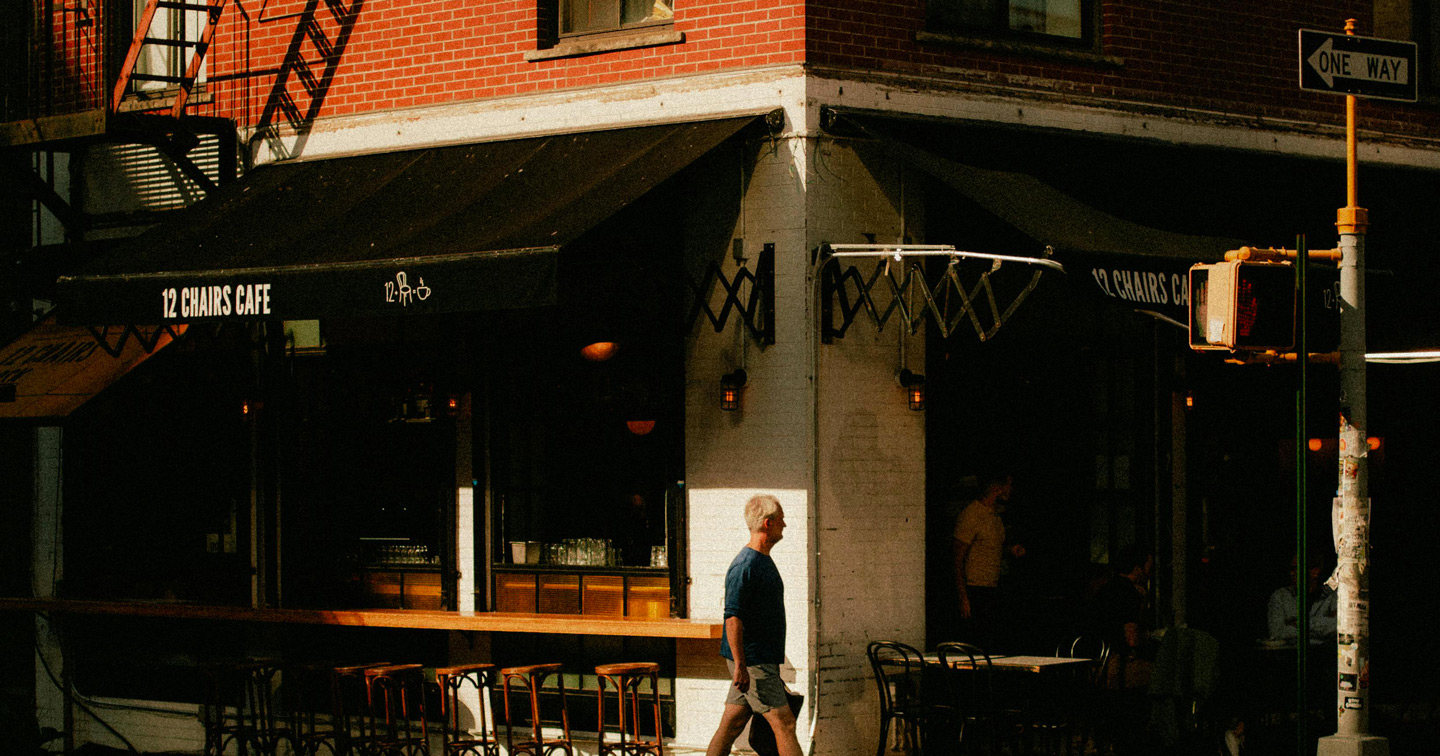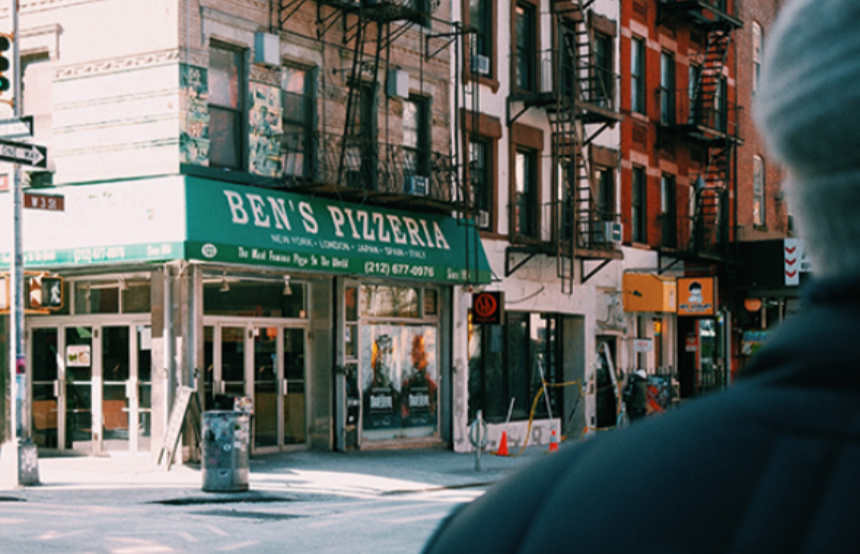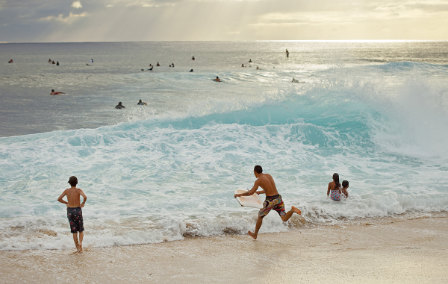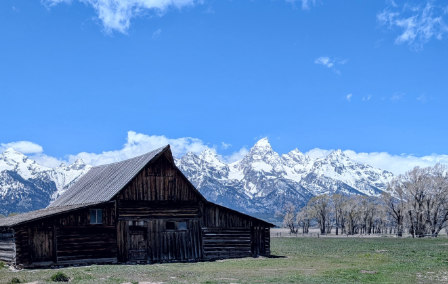Published 30th Jun. 2025
Reading time
With its dramatic landscapes, explosive geysers and wonderful wildlife, Yellowstone National Park is one of our favourite places in the USA. Spread across two million acres of land and spanning three states, the park is set on a dormant supervolcano and boasts spectacular geological features. Each season in Yellowstone brings a new spectacle – winter brings snow and serenity, while spring offers fantastic flora and fauna. But when to go? In our books, there’s no bad time, but if you need some help deciding, read on to discover the best time to visit Yellowstone.
November - April
We’re kicking off with Yellowstone’s longest season: winter. It might come as a surprise, but winter is actually widely regarded as the best time to visit Yellowstone – people are few and far between, and the park is cloaked in a thick layer of sparkling snow. Winter is also a fantastic time to see Yellowstone’s wolf population, as their grey fur stands out against the white backdrop. These majestic creatures tend to travel along the roadsides to stalk their prey, mainly elk and bison, as the snow is often more compacted.
Winter in Yellowstone sees temperatures drop all the way to -20ºC (and once even a bone-chilling -54ºC), so it’s crucial to pack accordingly. Forgo your classic holiday flip-flops for thermal layers, gloves and insulated boots, and make sure to bring sunglasses to protect your eyes from the sunbeams glinting on the snow. All of Yellowstone’s roads are closed to cars during winter – the perfect opportunity to travel through this winter wonderland on snowmobiles. We’d recommend a guided snowmobile tour to learn about the park’s fascinating history while simultaneously experiencing its natural beauty.

Image by Jordan Siemens / Getty Images.
May - June
The snow might not be gone entirely, but spring is when Yellowstone’s full services begin to open up. While May and June bring more people to the park, especially around Memorial Day weekend, you’ll avoid the summer crowds, making this a great time to visit Yellowstone. By the end of May, all roads will be open, so you’ll be able to drive through the wilderness; or, once you’ve got the all-clear from staff, why not grab your bike, running shoes or even some roller blades and head out into the park. The weather can be fairly erratic, so layer up – we wouldn’t want your fingers turning blue.
If you’re an animal lover, you’re in luck. Yellowstone boasts wonderful wildlife all year round, but spring brings the birth of elk and bison. It’s also a great time for birdwatching, so keep your eyes peeled for eagles, osprey and pelicans. May and June welcome the return of Yellowstone’s wildflowers, so have your cameras at the ready to snap the buttercups and pasqueflowers.

Image by Troy Harrison / Getty Images.
July - August
Summer in Yellowstone is short and sweet (and a little hectic). The warmer months bring longer days and higher temperatures, with the park reaching a pleasant 24ºC in the daytime – although it’s not unheard of for there to be snowfall, even in August. Summer is the best time of year to marvel at the vibrant waters of the park’s Grand Prismatic Spring. Unlike in the colder months, August’s warmer weather and clear skies mean that you can celebrate spring in all its neon-hued glory without clouds of steam (caused by hot spring water meeting cold air) obscuring it.
July and August are two of the most popular months to visit – the park welcomes over half of its yearly visitors in summer alone – and it can get pretty crowded, so it’s not necessarily the best time to visit Yellowstone. While you can still enjoy the park, we recommend avoiding the main attractions at peak hours and instead visiting later in the day. If you choose to drive, be wary of congestion. The traffic worsens when people slow down to gaze at the wildlife, so while we don’t blame you for wanting to admire the flora and fauna, make sure to pull over so you don’t cause unnecessary queues.

Image by Getty Images/iStockphoto.
September - October
Autumn in Yellowstone says goodbye to the hordes of summer and hello to golden-hued Aspen trees and wandering wildlife. The almost ever-present snowfall is likely to begin in autumn, so make sure to pack layers. The freezing early mornings will morph into pleasantly mild afternoons, meaning you’ll likely need a mix of woolly hats and cargo shorts.
While spring sees new life, autumn means mating season for many species living in the park. The elk rut means you’re likely to hear male elks bugling – a multi-tonal sound alternating between haunting whistles and deep barks – to attract their female counterparts. If you’re a fishing fanatic, this is a great time to grab a rod and go on the hunt for brown trout as they begin spawning. Autumn is also a fantastic season for visiting popular attractions without having to queue, so we’d recommend heading up to Artist Point in the early morning for fantastic views of Yellowstone’s immense Grand Canyon as the sun rises over it.

Image by Kate Berry.
Written by Emma Begley | Header image by David Sucsy/Getty Images.

From New York to California and all the states in between, our team knows the USA's hotspots incredibly well. What we really excel at, though, is the under-the-radar regions, thanks to our in-depth experience and the hand-picked guides we work with on the ground. Whether you’re travelling as a family or à deux, road trips are the ultimate way to explore the USA, and we're brimming with suggestions to improve journeys, from scenic route options to photogenic stop-off points (all based on our own experiences, of course). And if that's not enough, you'll have our in-country Concierge team on hand at all times for extra help and advice.
ENQUIRE NOWPractical advice and inspiration for your next trip

Spring in New York is an underrated sweet spot. While the Big Apple typically tempts travellers with its magical winters and sizzling summers, spring promises the gift of crowd-free fun. As the weather begins to warm, coats and winter blues are shed, cherry blossoms explode to life and rooftop bars reopen. Tick off the city’s classic corners (hello, Times Square) and join in with the seasonal festivities.
30th September 2025 - USA Guide

When it comes to postcard-perfect beaches, the USA has them in bucket-(and spade)-load. From California’s colourful coast and Florida’s buzzing beaches to Oregon’s rugged shores and Georgia’s photogenic stretches, there’s no shortage of sandy escapes on a USA holiday. Spot puffins on Cannon Beach and nesting turtles on Perdido Key, or stroll past Art Deco architecture on South Beach and charming hotels overlooking Coronado Beach.
4th August 2025 - USA Beaches & Islands

Americans know a thing or two about wide, open spaces, and our USA specialist, Dave, discovered what all the fuss was about during his research trip to the Rockies and the American West. He dug into dinosaur discoveries in Bozeman, snapped pictures of Yellowstone’s Grand Canyon and spotted bears and bison in Grand Teton National Park. When he wasn’t cheering at a Major League Baseball game in Denver, he was tucking into South Dakota’s specialty steak dish.
15th July 2025 - USA Travel Tips

Our team of destination experts will get to know you and your unique requirements for your holiday

We work with you to build an ultra-personalised holiday itinerary with your choice of accommodation, experiences and activities

All of our holidays include little extras designed to make a big difference to your trip, from fast-tracking you through airport check-in and security to our network of local Concierges